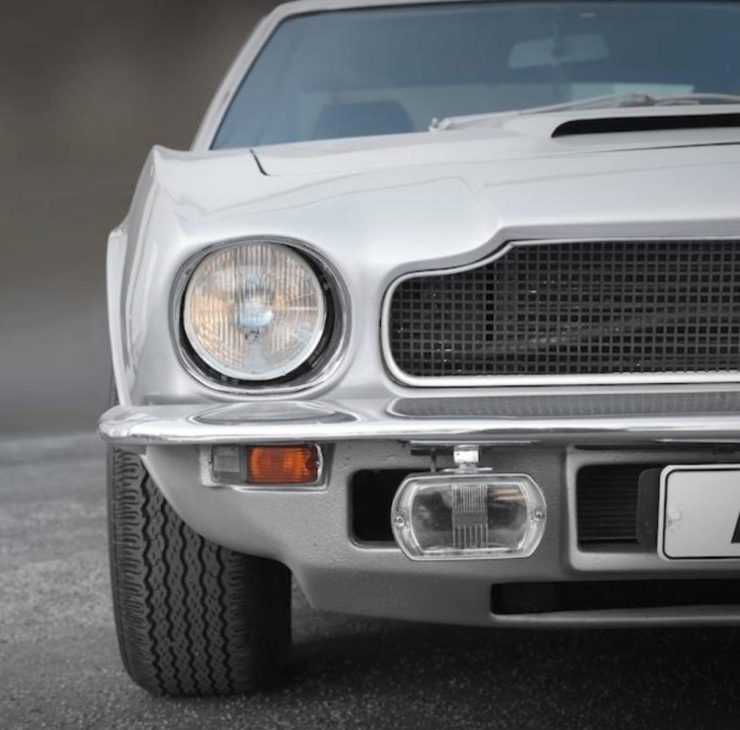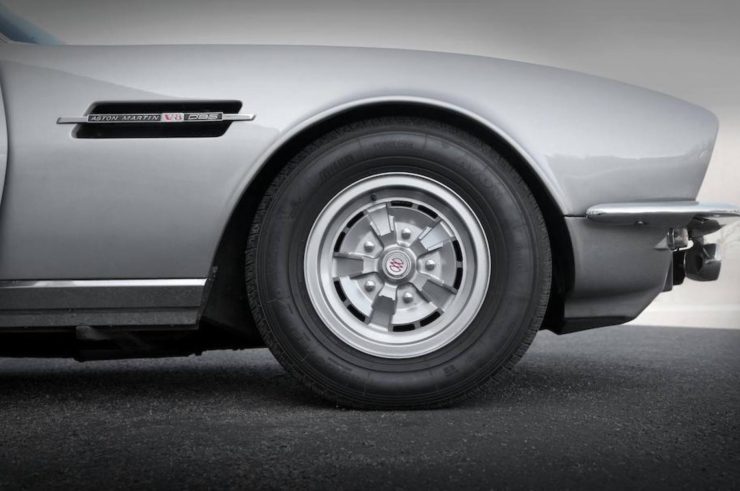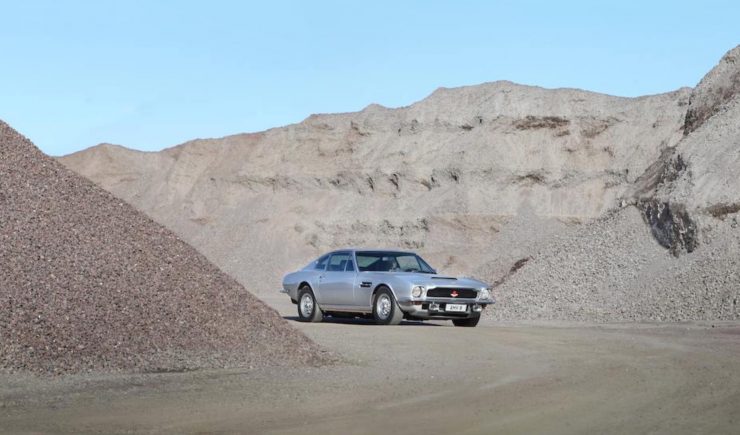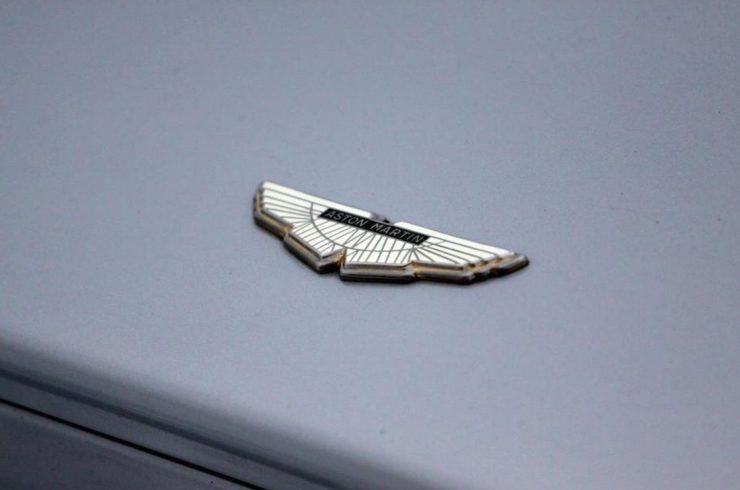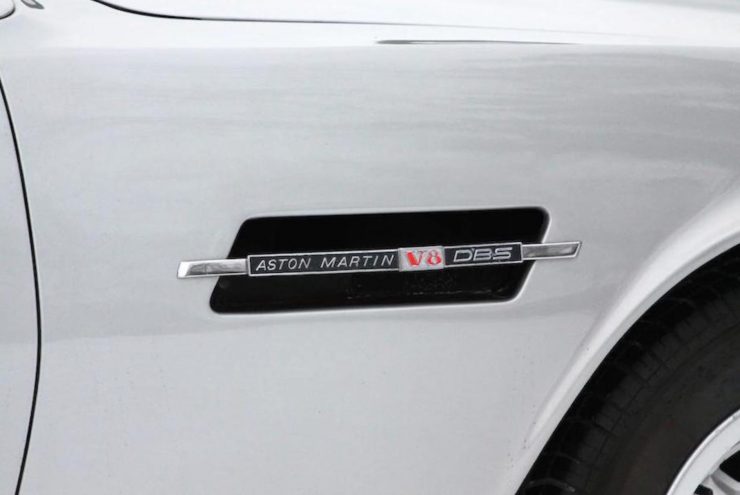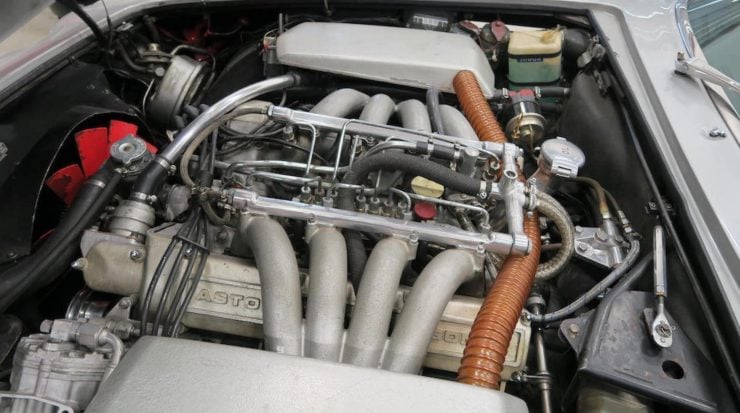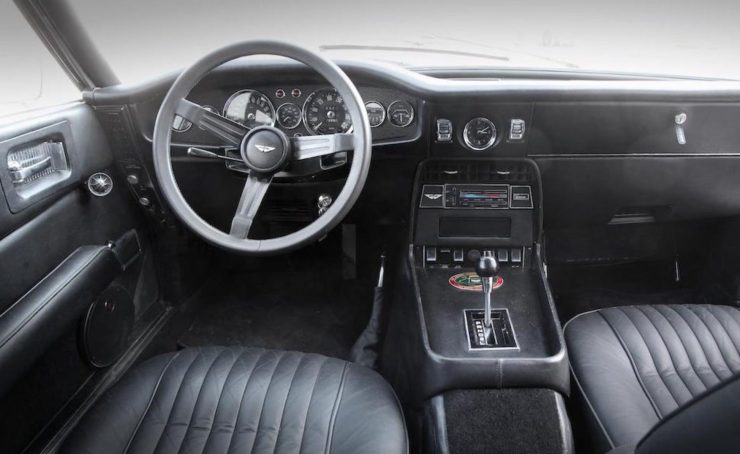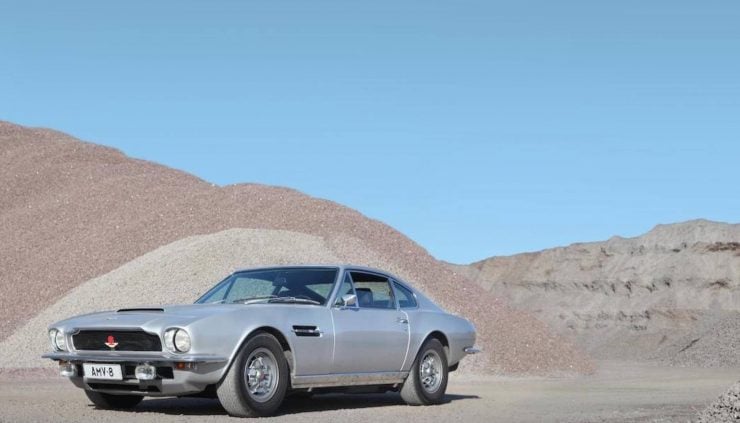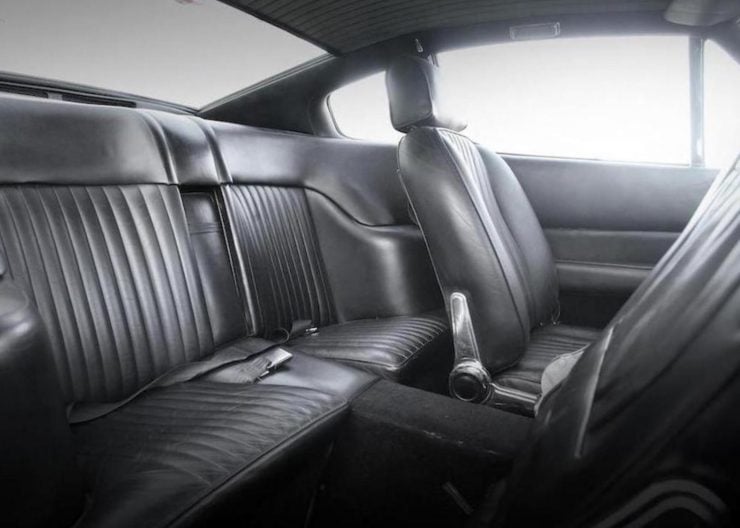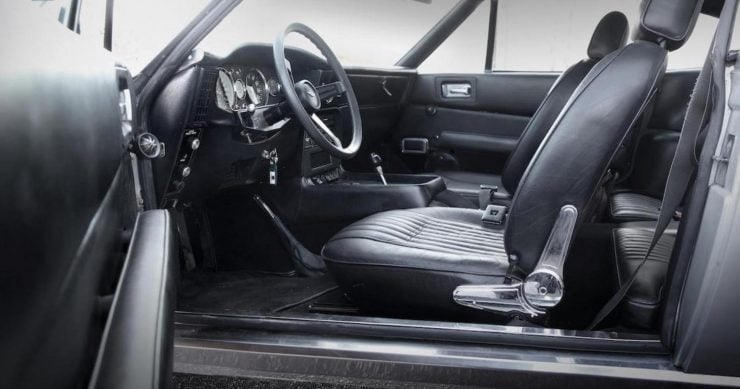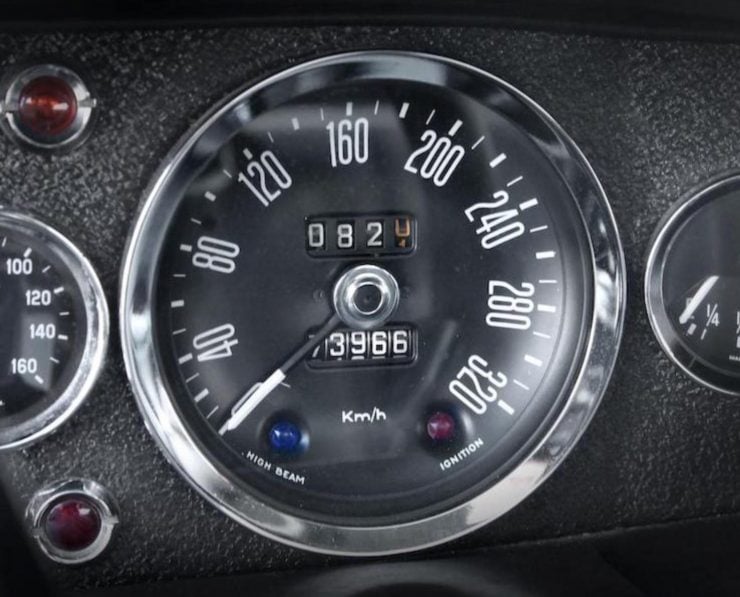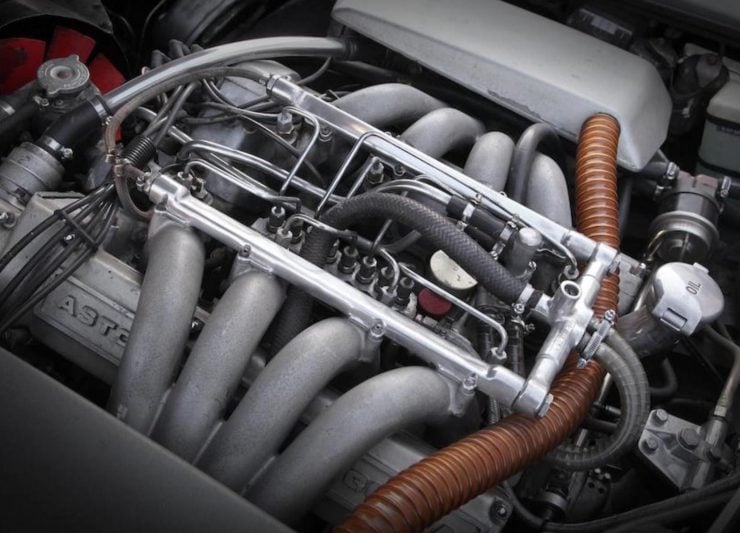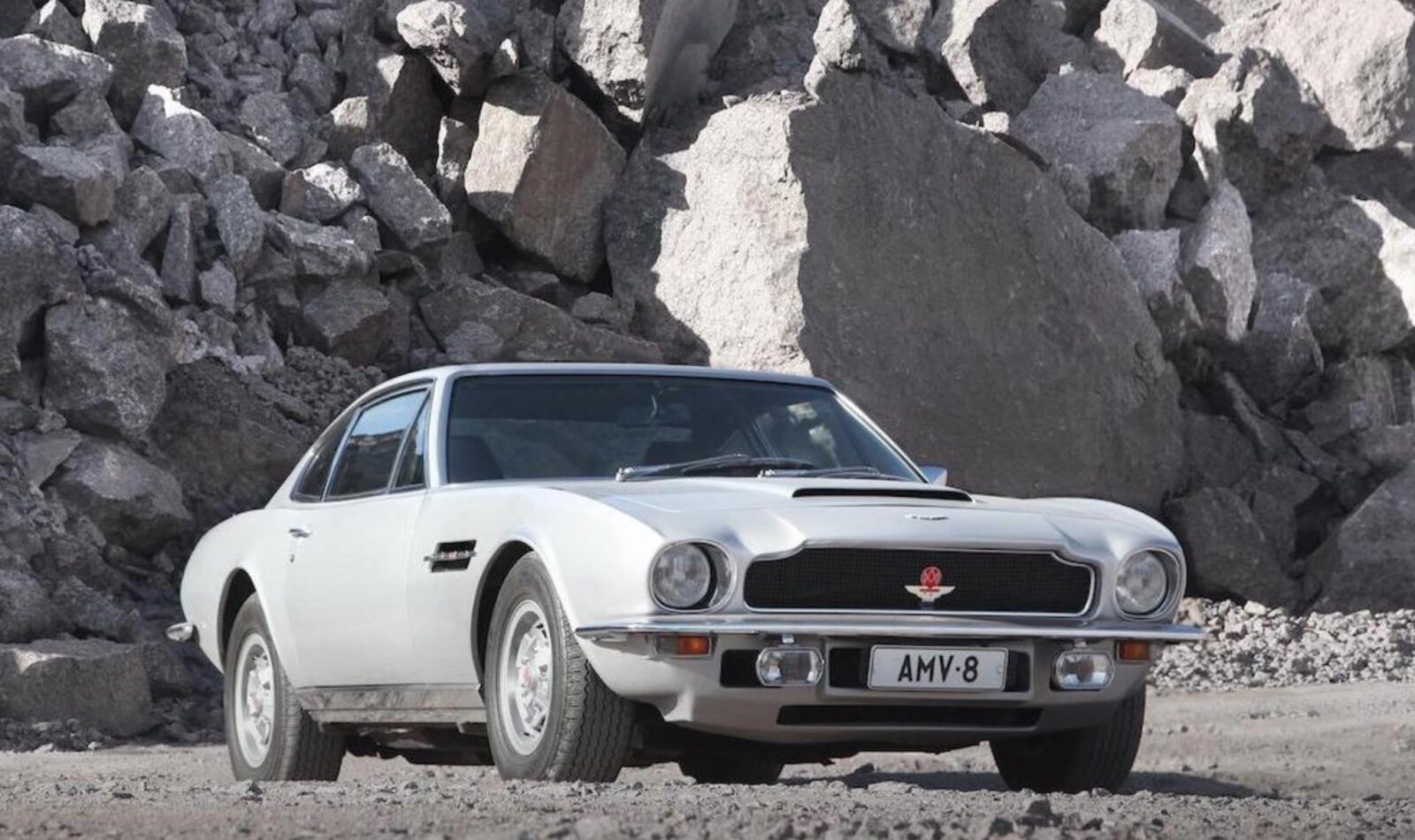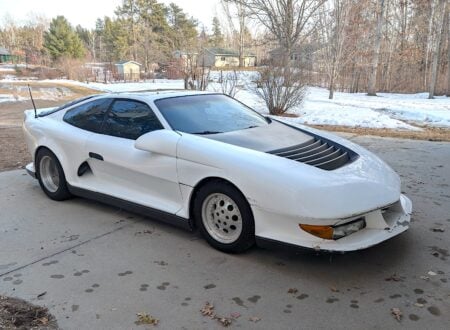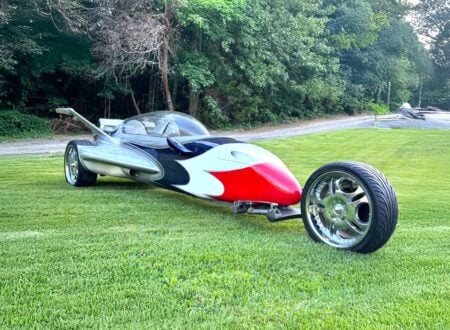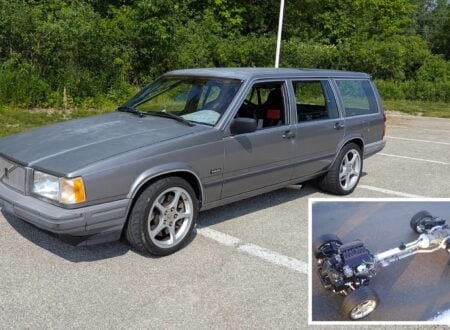The Aston Martin V8 and the Aston Martin DBS represented a significant shift in styling for the British automaker, gone were the curves of the DB4, DB5, and DB6 – replaced by more modern lines that many have suggested were inspired by the Jensen Interceptor and the Ford Mustang.
The new Aston Martin V8 was designed by the Polish engineer Tadeusz “Tadek” Marek, a mechanical genius who had earlier developed the alloy 6-cylinder engine used in the Aston Martin DBR2, which he subsequently redesigned for use in the DB4, DB5, DB6, and the DBS. Earlier in life he’d assisted with the Centurion tank’s Meteor engine development, and in the post WWII years he moved to Germany to assist with the United Nations Relief and Rehabilitation Administration.
The new Marek V8 had an initial displacement of 5.3 litres (5340cc) and produced approximately 315 hp, although these figures were never officially released. 0-62 could be achieved in 5.9 seconds and a top speed of just under 160 mph was claimed (and successfully tested).
Aston Martin introduced the new V8 in 1969 as the DBS V8, it was sold until 1972 when it was replaced with the slightly more simply named Aston Martin V8. The new model was later dubbed the Series 2 to assist with differentiation in a similar way to the unofficial retroactive renaming of the DB4 models that had preceded it. Gone were the quad headlights replaced with a single unit on either side, a new mesh grill that more closely resembled that of the earlier DB cars.
By the time the Series 3 debuted in 1973 just 288 Series 2 cars had been built, this combined with their early provenance has made them highly collectible nowadays with prices stretching into the low 6 figures for well-sorted examples like this one. Between 2001 and 2003 the car had comprehensive work completed including a full cylinder head rebuild and an ignition upgrade to the Lucas system fitted in later V8s for the sake of reliability.
The car is now being offered as part of the Aston Martin Works Sale due to be held by Bonhams on the 21st of May, if you’d like to read more about it or register to bid you can click here to visit its official listing.
